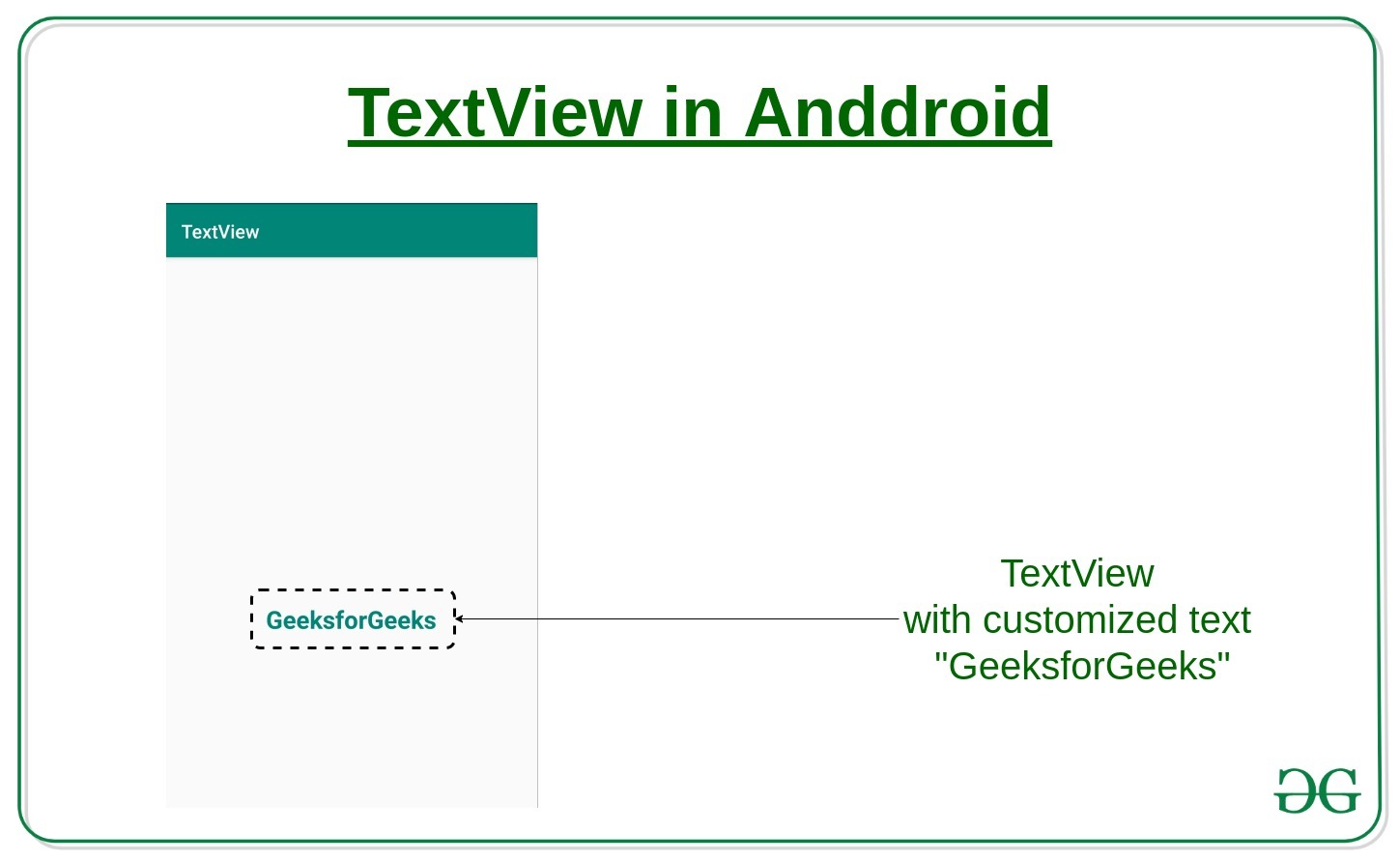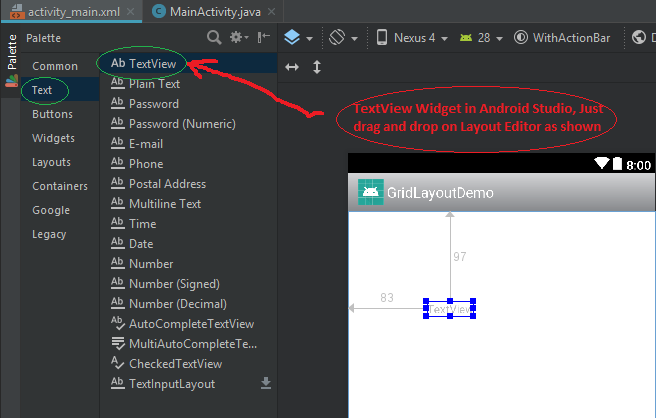

- #Testview text in a style android update#
- #Testview text in a style android full#
- #Testview text in a style android android#
Note, however, that if you use curled apostrophes within an italic phrase, you should replace them with straight apostrophes. Use the HTML and tags around words that should be in italics.Use the HTML and tags around words that should be in bold.The TextView ignores all HTML tags except the following:.See the " Formatting and Styling" section of String Resources for more details. You must also escape any other non-ASCII characters. If you have a double-quote in your text, you must also escape it ( \"). If you have an apostrophe (') in your text, you must escape it by preceding it with a backslash ( \').

To properly display in a text view, text must be formatted following these rules: In either case, the text may contain embedded HTML tags or other text formatting codes. You can also create text as a single long string in the strings.xml resource. In an app that accesses magazine or newspaper articles, the articles that appear would probably come from an online source or might be saved in advance in a database on the device.


To set the initial text value of the view, use the android:text attribute: android:text="Hello World!" What the text looks like within the view, such as the initial text and its style, size, and colorįor example, to set the width, height, and position within a LinearLayout:.How the view itself appears, such as with a background color.Where the TextView is positioned in a layout (like any other view).You learn all about EditText in another chapter. If you want to allow users to edit the text, use EditText, a subclass of TextView that allows text input and editing.
#Testview text in a style android update#
You can refer to a TextView view in your Java code by using its resource id, and update the text from your code. You can add a resource id to the TextView, and control how the text appears using attributes in the XML layout file.
#Testview text in a style android full#
You can use TextView for a view of any size, from a single character or word to a full screen of text. One view you may use often is the TextView class, which is a subclass of the View class that displays text on the screen. This chapter also shows how you can create a scrolling view of text and other elements. A TextView can be used to show a message, a response from a database, or even entire magazine-style articles that users can scroll. This chapter describes one of the most often used views in apps: the TextView, which shows textual content on the screen. This course is now deprecated and this content will be The new course is available atĪndroid Developer Fundamentals course (Version 2), or go directly to
#Testview text in a style android android#
Lesson 13: Permissions, Performance and Securityġ3.1: Permissions, Performance and SecurityĪ new version of this course is now available, updated to reflectīest practices for more recent versions of the Android framework andĪndroid Studio. Lesson 11: Sharing data with content providersġ1.1: Share Data Through Content Providers Lesson 8: Triggering, scheduling and optimizing background tasks Lesson 3: Testing, debugging, and using support librariesĥ.3: Providing Resources for Adaptive Layouts 2.1: Understanding Activities and IntentsĢ.2: The Activity Lifecycle and Managing State


 0 kommentar(er)
0 kommentar(er)
